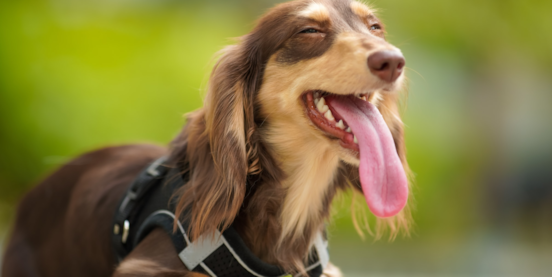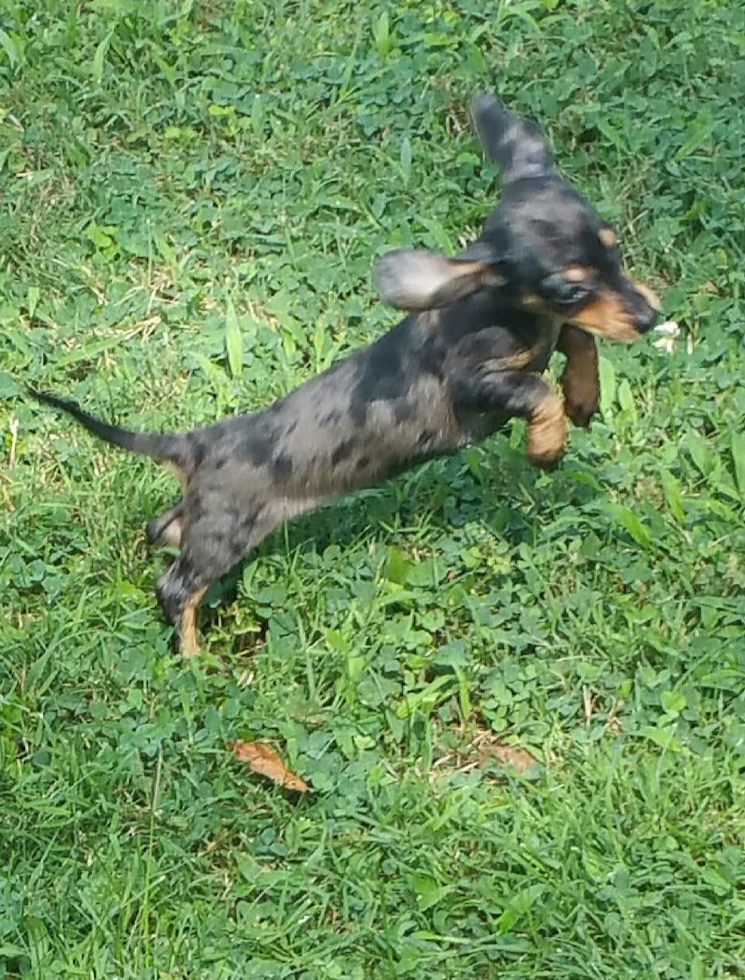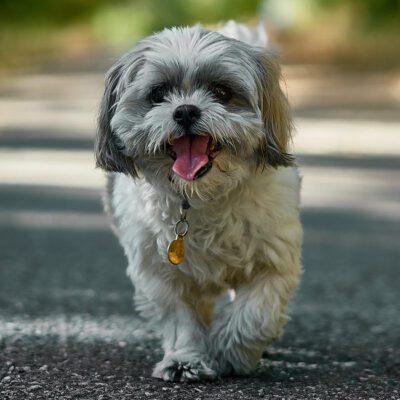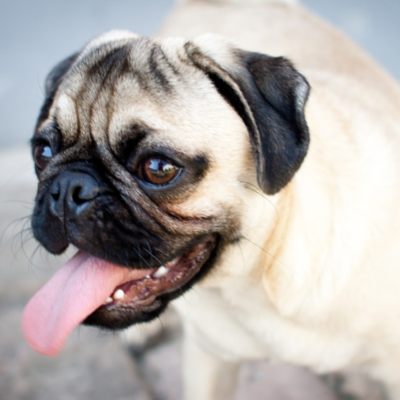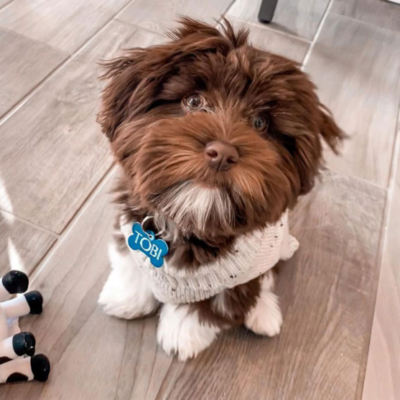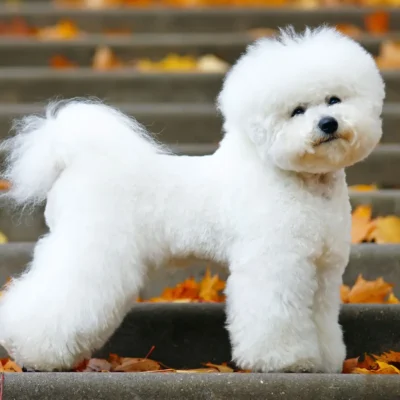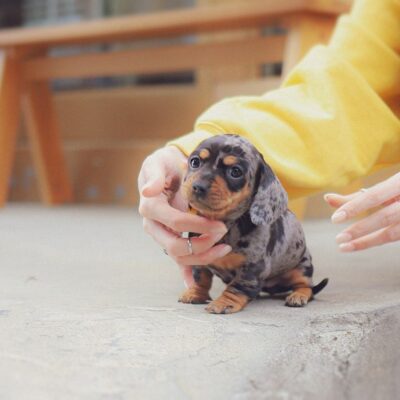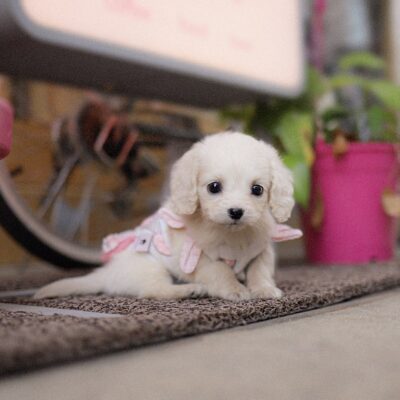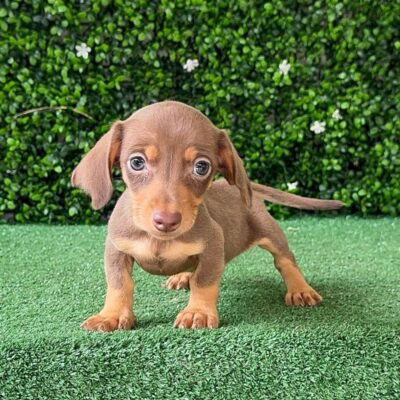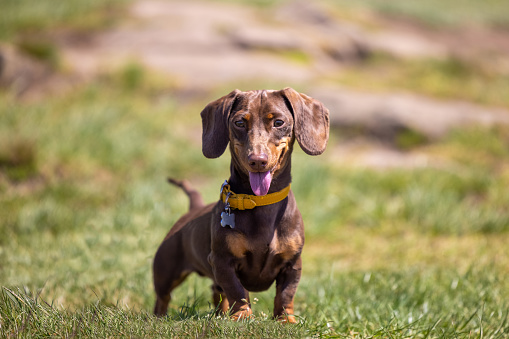
With its little legs, long low body, and big, bold personality, the Dachshund dog breed is impossible to ignore — and even harder not to fall in love with. This iconic breed has stolen hearts all over the world, not just for its one-of-a-kind look, but for its lively spirit, curious nature, and endlessly loyal heart. With a bright, alert expression and a happy-go-lucky attitude, the Dachshund is equal parts adventurer and cuddle buddy.
Whether they’re bravely exploring the backyard or curling up by your side for a nap, Dachshunds make incredible companions. They’re friendly, fun-loving, and full of personality — the kind of dog that brings energy and love into every room. For anyone looking for a sweet, courageous little sidekick, the Dachshund fits the bill beautifully.
Thinking about bringing one home? If so, it’s also worth exploring which breeds are the easiest to care for — especially if you’re a first-time dog parent or someone with a busy lifestyle. Understanding each breed’s needs helps set you and your future pup up for the happiest life together.
| Attribute | Details |
|---|---|
| Same As | |
| Breed Type / Mix | Purebred |
| Life Span | 12-16 yrs |
| Training | Responsive |
| Shedding | Regularly |
| Energy | Moderate Energy |
| Temperament | Affectionate, Alert, Confident, Gentle, Intelligent, Playful |
| Adult Weight | Mini 8-11 lbs, Standard 16-32 lbs |
| Adult Height | Mini 5-6 in, Standard 8-9 in |
- Old Hunting Breed: Developed in Germany over 600 years ago.
- Other Names: Known as wiener dog, sausage dog, and badger dog.
- Balanced Temperament: Generally calm and outgoing.
- Two Sizes: Available in mini and standard sizes.
- Affectionate Companion: Cuddly and loyal, making them great pets.
- Easy to Train: Stubborn at times, but trains well with proper motivation.
- Excellent Therapy Dogs: Known for their sweet nature.
- Low Maintenance: Easy to groom, making them ideal for first-time pet owners.
- Loyal and Bonded: Renowned for forming strong attachments to their owners.

Dachshunds are a distinctive breed, instantly recognizable by their long bodies and short legs. While they may be considered lapdogs by some, these courageous and alert dogs carry themselves with a bold and confident demeanor. With heads held high and sharp, watchful expressions, Dachshunds are always on alert, showcasing their brave nature.
Size and Appearance
Dachshunds come in two distinct sizes:
- Miniature Dachshund: Standing 5 to 6 inches tall and weighing up to 11 pounds.
- Standard Dachshund: Standing 8 to 9 inches tall, with a weight range of 16 to 32 pounds.
Their body is long and muscular, with short legs that give them their iconic low-to-the-ground stance. They possess almond-shaped, dark eyes full of expression, a long pointed muzzle, and drop ears. The Dachshund’s coat comes in three varieties: short, longhaired, or wirehaired, offering a variety of textures and looks. Despite their small size, Dachshunds have a smooth, confident gait.
Colors and Patterns
Dachshunds come in a dazzling array of colors and patterns, including:
- Solid Colors: Black, red, cream, fawn, chocolate, and more.
- Combination Colors: Black and tan, chocolate and tan, red and cream, and blue and tan.
- Patterns: Brindle, dapple, piebald, brindle piebald, and sable.
This variety of colors and patterns, combined with their unique physique, makes the Dachshund a visually striking breed.
Dachshunds may be small in stature, but they certainly aren’t lacking in personality. Their bold, confident demeanor, coupled with their striking appearance, ensures they stand out among other breeds. Whether you’re drawn to their brave nature or their distinct looks, Dachshunds are truly one-of-a-kind companions.
While the Dachshund may look like a small, adorable companion, don’t let its size fool you—this breed is known for its bold and fearless nature. Originally bred as a hunting dog, the Dachshund’s instincts remain sharp, especially around smaller animals, though they are generally friendly and sociable with others.
Dachshunds have a remarkably balanced temperament. They are well-mannered and kind-hearted, making them excellent family pets. Known for their affectionate nature, they form strong and lasting bonds with their families. Dachshunds thrive on companionship and are often described as being inseparable from their owners, eagerly following them around. Their deep attachment to family members is one of their most endearing qualities.
Dachshund puppies are playful, fun-loving, and great with children. They enjoy being pampered and cuddled, often seeking out attention from their loved ones. Despite their independent streak, they are incredibly loyal and tend to stay close to their humans.
Although Dachshunds are not the most active breed and aren’t suited for long hikes or strenuous activities, they love being included in family activities. They enjoy outdoor games like fetch and chase, and while they may not run for miles, they’re more than happy to sprint around the yard or go on shorter walks with their humans.
Their playful spirit and desire to be part of the family make them excellent companions for those seeking an affectionate, loyal dog that enjoys fun but doesn’t require intense physical exertion.
Grooming
Dachshunds are relatively low-maintenance when it comes to grooming. They are moderate shedders, and regular brushing—once a week for short-coated varieties and one to two times a week for longer-coated ones—keeps their coat looking sleek and tidy. Their coats come in three types: smooth, longhaired, and wirehaired, each requiring similar levels of care.
Baths are generally not needed frequently due to their natural cleanliness and odorless coats. A bath every two to three months is usually sufficient to keep them fresh.
A vital grooming task for Dachshunds is nail clipping. Their nails grow quickly, and regular trimming—at least once a month—is important to prevent painful breakage and ensure comfort while walking.
Exercise Needs
Although Dachshunds are not the most athletic breed, they still need daily exercise to stay healthy and happy. A few short, 10-minute walks each day along with some interactive playtime will keep your Dachshund fit and satisfied. They enjoy games like fetch and are likely to engage in playful running around, though they’re not suited for long hikes or strenuous activities due to their short legs and long bodies.
Health
Dachshunds are generally healthy dogs, but due to their long backs and short legs, they can be prone to back issues, especially if they engage in excessive jumping or rough play. To maintain their health, it’s important to avoid excessive weight gain, as obesity can put additional strain on their backs.
Like all small breeds, they may be susceptible to ear infections due to their floppy ears, dental issues if not maintained, and possible hearing or vision decline with age. Regular check-ups with the vet are essential for early detection and management of any health concerns.
Lifespan
Dachshunds are known for their long lifespan, typically living between 12 and 16 years. With proper care—such as a balanced diet, regular vet visits, and moderate exercise—they can live well into their late teens, with some reaching 20 years or older.
Training
Dachshund puppies are intelligent but can be a bit stubborn, making training a bit of a challenge at times. However, they are highly motivated by treats and praise, which makes positive reinforcement an effective training method. Consistency is key, especially for encouraging good behavior.
Due to their attachment to their owners, Dachshunds can suffer from separation anxiety if not trained for independence early. Gradually leaving your puppy alone for short periods and increasing the duration can help alleviate this issue.
Socialization and leash training should begin early, as Dachshunds are naturally friendly and curious. Exposing them to different people, places, and experiences while they are still young helps them grow into well-adjusted, confident dogs. Patience and gradual introductions are important for ensuring they don’t feel overwhelmed.
By following these guidelines, you can ensure your Dachshund remains happy, healthy, and well-behaved throughout their life.
The Dachshund is an ancient breed with a rich history that spans over 600 years. Originating in Germany, its name translates to “badger dog,” which refers to the breed’s specialized role in hunting badgers. The Dachshund’s distinctive long body and short legs were specifically developed to help them dig into burrows and chase down their quarry.
Known for their bravery and determination, Dachshund puppies were not only skilled in hunting badgers but were also used to hunt boars, deer, and foxes. As their reputation grew, they became popular among hunting enthusiasts across Europe, eventually traveling to the United States, where they won the hearts of many dog lovers. Their unique mix of feistiness, courage, and affectionate personality helped them gain fame as both skilled hunters and beloved companion pets.
The Dachshund was officially recognized by the American Kennel Club in 1885 and has since become one of America’s most cherished dog breeds. Also affectionately known as the “wiener dog,” “sausage dog,” or “badger dog,” this lovable breed continues to be a favorite in homes across the world.
Isn’t ‘Miniature Dachshund’ already the smallest official size? What is a ‘Teacup’? Yes, the AKC recognizes Standard and Miniature Dachshunds. ‘Teacup’ is an unofficial marketing term used by some breeders for Dachshunds bred to be even smaller than the Miniature standard (typically under 11 lbs at 12 months). This extreme miniaturization is not recognized and carries significant health risks.
How much smaller is a ‘Teacup’ Dachshund than a Miniature Dachshund? Miniature Dachshunds should weigh 11 pounds or under at 12 months old. Puppies marketed as ‘teacup’ are often aimed to be well under this, sometimes advertised as maturing at 5-8 pounds or even less. Be very skeptical of size guarantees.
Are Teacup Dachshunds at an even higher risk for back problems (IVDD)? Absolutely. All Dachshunds are predisposed to Intervertebral Disc Disease due to their long backs and short legs (chondrodystrophy). Making them even smaller and potentially more fragile can exacerbate this risk, making even small impacts or routine movements potentially dangerous for their spine.
What are the major health concerns specific to breeding Dachshunds down to ‘teacup’ size? Beyond the severe risk of IVDD, they face increased likelihood of hypoglycemia (low blood sugar), hydrocephalus, heart defects, liver shunts, collapsing trachea, severe dental overcrowding in their tiny jaws, and extremely fragile bones prone to fractures.
Do Teacup Dachshunds retain the typical bold and stubborn Dachshund personality? They might, but their extreme physical fragility can often lead to increased anxiety, fearfulness, or nervousness, overriding the breed’s natural boldness. Unethical breeding practices focused solely on size can also negatively impact stable temperament.
How much exercise can a Teacup Dachshund safely handle? Very minimal. Short, gentle leash walks on flat surfaces and careful indoor play are sufficient. Strenuous activity, jumping (on/off furniture), and using stairs must be strictly avoided to protect their fragile back and bones.
Does the ‘teacup’ size affect their grooming needs depending on coat type (smooth, long, wire)? The basic grooming needs for their specific coat type remain (e.g., regular brushing for longhairs, stripping for wirehairs, wiping for smooths). However, handling during grooming must be exceptionally gentle due to their fragility.
Are Teacup Dachshunds as prone to barking as standard or miniature Dachshunds? Yes, Dachshunds were bred to be vocal hunting dogs. This trait usually persists regardless of size. Expect potential for significant barking; early training is needed to manage it.
What are the biggest challenges when training a Teacup Dachshund? Their potential stubborn streak combined with the difficulties often seen in house-training very small breeds can be challenging. Positive reinforcement is key, but extreme patience is required. Their fragility also limits some training activities.
How careful do I need to be when handling a Teacup Dachshund? Extremely careful. Always support their back and chest when lifting. Never let them jump from heights (even low ones like a sofa). They can be easily injured by being dropped, stepped on, or handled roughly. Homes with boisterous activity may not be suitable.
Is the lifespan of a Teacup Dachshund shorter than a standard or miniature? Often, yes. The health complications associated with extreme miniaturization frequently lead to a significantly shorter lifespan than the typical 12-16 years expected for well-bred standard or miniature Dachshunds.
What is the typical price range for a puppy advertised as a ‘Teacup Dachshund’? Prices are frequently inflated, ranging from $2,000 to $5,000 or more, capitalizing on the “rare” or “designer” aspect. Remember, this high price does not guarantee health and often supports questionable breeding practices.
Why do reputable Dachshund breeders (like those in the Dachshund Club of America) not breed ‘teacups’? Reputable breeders prioritize health, temperament, and adhering to the official breed standard. They recognize the severe health risks and ethical issues involved in deliberately breeding dogs below the healthy minimum size outlined in the standard.
What is a safer alternative if I want a very small Dachshund? Look for a well-bred Miniature Dachshund from a responsible breeder who performs health checks (especially for IVDD, eyes, and heart) and breeds close to, but within, the official Miniature size standard. Prioritize health over extreme smallness.
Do Teacup Dachshunds require special feeding to prevent hypoglycemia? Yes, their tiny bodies have minimal reserves, making them highly susceptible to dangerous drops in blood sugar (hypoglycemia). Frequent, small meals of high-quality puppy food are essential, especially when young. Owners need to be vigilant for signs of hypoglycemia.
Should I install ramps for a Teacup Dachshund? Absolutely. Ramps should be provided to allow them access to furniture like sofas or beds, preventing the dangerous impact of jumping up or down, which is critical for protecting their fragile spines.
How can I socialize a Teacup Dachshund puppy without putting it at risk? Socialization needs to be extremely controlled. Introduce them calmly to gentle, vaccinated adult dogs and calm people. Avoid crowded places or interactions with overly playful or large dogs. Focus on positive exposure in safe environments.
Are Teacup Dachshunds good pets for families with young children? Generally, no. Their extreme fragility makes them highly vulnerable to accidental injury by well-meaning but clumsy young children. A home with older, considerate children or adults only is usually safer.
Do Teacup Dachshunds suffer more from dental problems? Yes, fitting a normal number of Dachshund teeth into an unnaturally small jaw often leads to severe overcrowding, misalignment, retained baby teeth, and increased risk of periodontal disease. Diligent dental care is crucial.
Can Teacup Dachshunds live comfortably in apartments? Their small size and low exercise requirements make them seem suitable for apartments. However, their potential for barking and the need for a very safe environment (no easy access to stairs or high furniture without ramps) must be considered.


